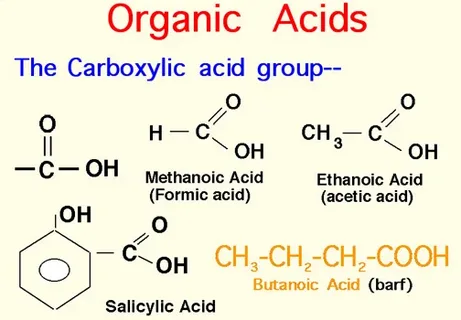The Organic Acid Market is becoming a driving force behind green and sustainable innovation across multiple industries. Organic acids like citric, lactic, succinic, gluconic, and itaconic are key to delivering eco-friendly alternatives in sectors ranging from cleaning products and bioplastics to construction, agriculture, and personal care. These compounds offer natural performance benefits along with low environmental impact positioning them as critical enablers of the green solutions economy.
1. Why Organic Acids are Central to Green Innovation
-
Biodegradability & Low Toxicity
Organic acids are derived from microbial fermentation or botanical feedstocks, often considered safe and rapidly biodegradable. This enables product formulations that minimize ecological harm and support circular economy principles. -
Natural Sourcing & Renewable Feedstocks
By using agricultural residues (like sugarcane bagasse or corn stover) and fermentation processes, producers convert waste into valuable, sustainable ingredients—reducing dependence on fossil resources. -
Functional Versatility
Organic acids serve multiple roles: pH adjusters, chelators, flavor enhancers, cross-linkers, and preservative agents. This multipurpose nature allows brands to simplify formulas and reduce the number of chemical ingredients.
2. Key Applications Driving Green Use Cases
a) Eco-Friendly Cleaners & Sanitizers
Citric, lactic, and gluconic acids are being widely used in green household and industrial cleaners—with certifications such as eco-label, USDA Biopreferred, or Safer Choice. These acids dissolve mineral deposit, control microbial growth, and support natural fragrance delivery.
b) Biodegradable Polymers & Packaging
Succinic acid is a building block for compostable plastics such as polybutylene succinate (PBS) and bio-based polyurethanes. When paired with plant-derived diols, it forms low-carbon biopolymers ideal for packaging, agriculture films, and single-use items.
c) Green Construction & Coatings
Itaconic and citric acids are used in water-soluble resins, binders, and cross-linkers for coatings and adhesives—offering low-VOC alternatives while maintaining performance in wood finishes, renderings, and specialty formulations.
d) Sustainable Agriculture & Soil Amendments
Gluconic acid derivatives and acidiform blends help chelate micronutrients in crop nutrition or serve as natural pH modulators in water-based fertilizer systems—enhancing nutrient availability with minimal environmental load.
e) Biotechnologies & Renewable Solvents
Organic acids are gaining traction as green solvents, ionic-lipid mediators, and intermediates in enzymatic processes. Formic acid also features in carbon capture redux by being part of formate-based energy storage systems.
3. Drivers Accelerating Adoption of Green Solutions
-
Regulatory Push for Low-Impact Chemicals
Global regulations increasingly restrict phosphates, EDTA, phosphonates, and high VOC systems. Organic acids offer biodegradable, shelf-safe alternatives compliant with green standards. -
Corporate Sustainability Commitments
Brands pledging zero-waste or carbon neutrality seek ingredient solutions with transparent lifecycle data. Organic acids—traceable from feedstock to final product—support ESG reporting and consumer trust. -
Consumer Demand for Clean Products
Consumers are switching to “plant-based,” “zero-toxicity,” and “compostable” product lines. Formulations containing organic acids enable credible claims on sustainability packaging and ingredient transparency. -
Advances in Production Technologies
Enhanced fermentation methods, continuous bioprocessing, and downstream purification tools are lowering production costs and increasing the purity available to industrial formulators.
4. Challenges & Pathways to Scale Green Implementation
-
Feedstock Procurement and Consistency
Sourcing consistent, sustainably certified biomass is essential. Producers must validate non-GMO or organic status and establish vertically integrated supply chains to mitigate seasonal variability. -
Scaling Bio-Based Chemistry
Scaling high-purity acid production for industrial use still requires capital investment. Pilot projects and modular fermentation plants are reducing technical risk and improving scalability. -
Pricing Against Petrochemicals
Although organic acids offer environmental value, they can be more expensive than traditional synthetic counterparts. Effective marketing of performance, certification, and brand alignment is key to commanding price premiums. -
Formulation Compatibility and Performance
In high-demand applications like coatings or adhesives, acid functionality must balance compatibility with polymer matrices, shelf stability, and durability. Technical testing and formulation expertise are critical.
5. Innovation Trends Shaping Future Green Markets
-
Designer Acid Molecules
Customized organic acid variants (e.g., longer-chain or branched succinic moieties, maleic/itaconic functional blends) are being tailored for specific performance in adhesives, composites, and specialty polymers. -
Combinatorial Green Formulations
Acid blends paired with biopolymers, enzymes, or green surfactants enable clean, high-performance systems across cleaning, agriculture, and consumer goods. -
Localized and Modular Production Hubs
Localized fermentation hubs near biomass feedstock centers (like sugar belt regions) reduce transport emissions and enable faster supply to green markets. -
Digital Traceability & Lifecycle Transparency
Use of QR-coded traceability systems, blockchains, and certification records enable brands to communicate cradle-to-product life stories—boosting consumer trust and premium positioning.
6. Strategic Opportunities for Stakeholders
-
Ingredient Suppliers & Chemical Manufacturers
By investing in green certifications and modular fermentation capabilities, suppliers can target new B2B segments—from eco-cleaning lines to biodegradable packaging manufacturers. -
Brand Formulators & Product Innovators
Embracing acid-based formulations alongside enzyme or botanical systems enhances green-aligned storylines, simplifies labels, and supports sustainability claims. -
Technology Investors & Biotech Firms
Companies focusing on strain optimization, purity refinement, or continuous processing can leverage growth as green chemistry regulations tighten globally. -
Policy Architects & Industry Alliances
Facilitating adoption via joint standards or certification channels helps build industry trust, technical performance benchmarks, and coordinated regulatory guidance.
Conclusion
The Organic Acid Market represents a cornerstone in advancing green solutions across diverse industries. With environmentally compatible, naturally derived, and multifunctional profiles, organic acids pave the way for safer cleaning agents, biodegradable polymers, sustainable agriculture, and low-impact industrial chemistry. While challenges around scale, cost, and material sourcing remain, innovation in bio-based production and formulation is enabling broader adoption. For businesses aligned with sustainability goals, the organic acid space offers powerful opportunities to lead in the transition toward a cleaner, greener economy.
Description:
This article examines how the Organic Acid Market is driving green innovation across industries from eco-cleaners and biodegradable packaging to sustainable agriculture and green construction. It outlines the functional versatility of organic acids, key application areas, drivers of adoption, challenges, and innovation trends. The piece also highlights opportunities for suppliers, brands, and investors aiming to harness organic acids as sustainable solutions in a carbon-conscious marketplace.



